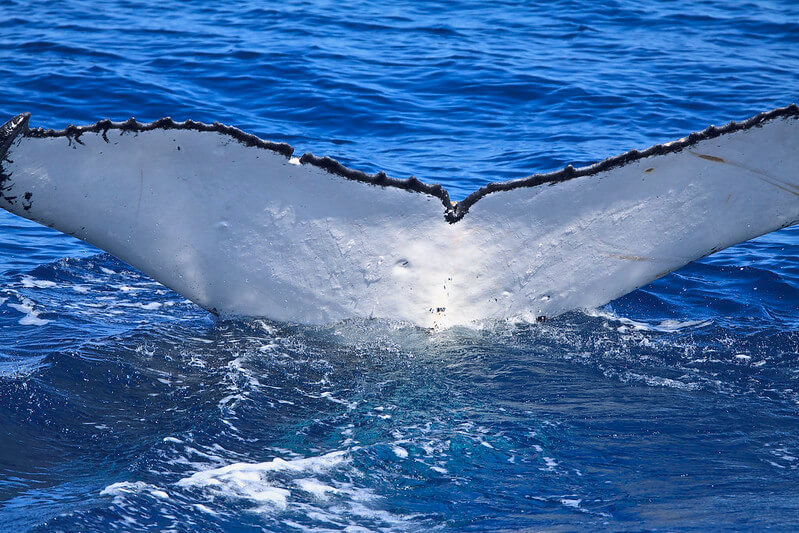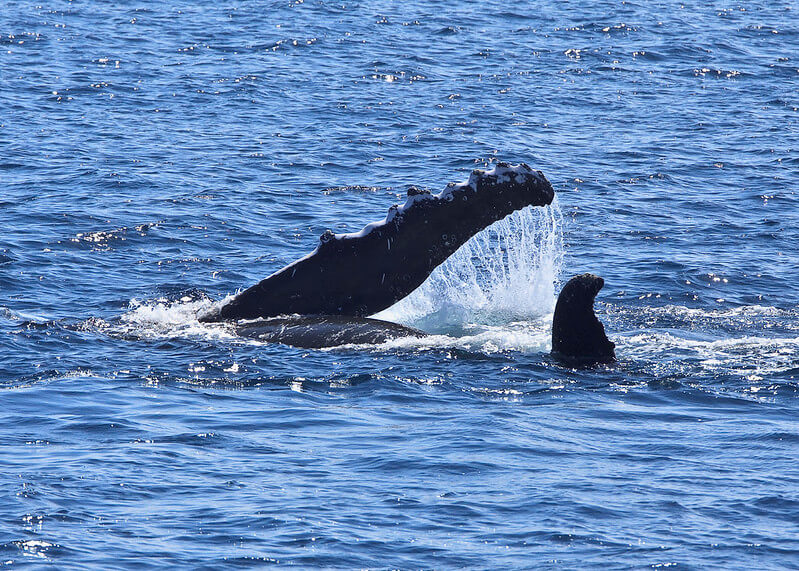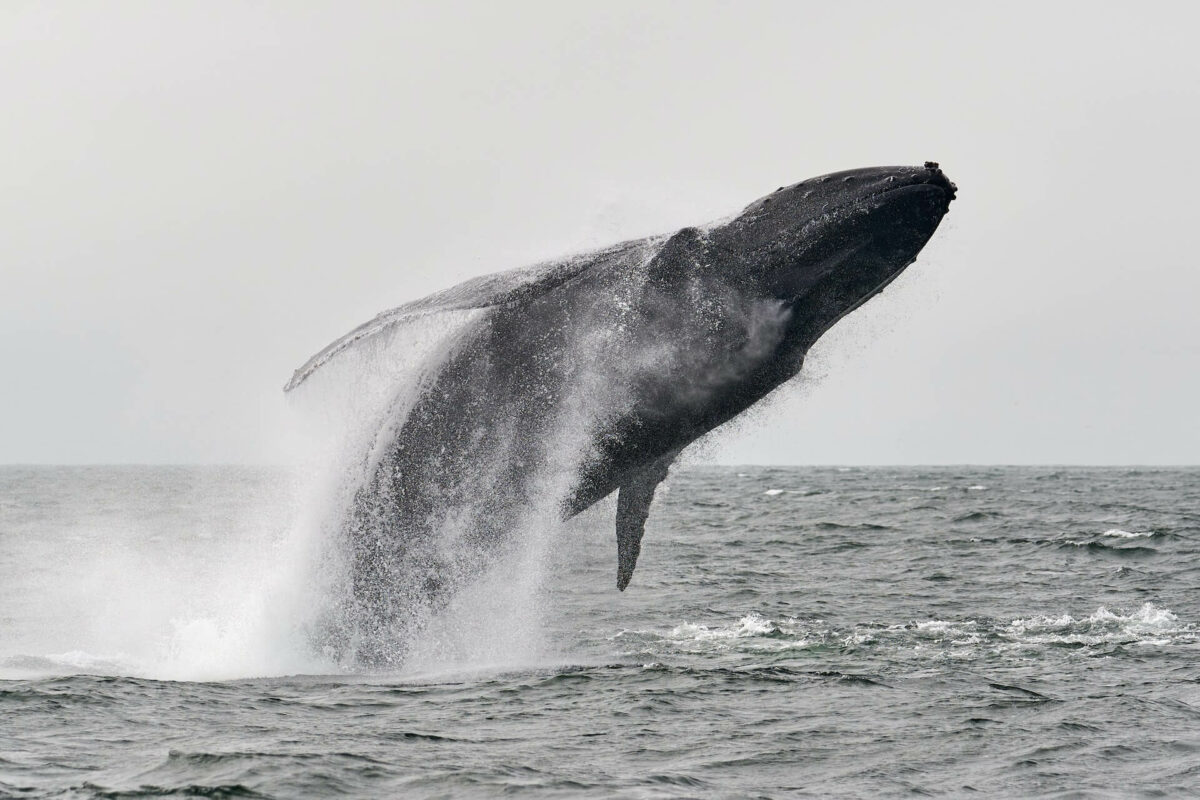Whales are arguably some of the most charismatic and beloved animals in the world.
People have always felt a strong connection to these marine mammals and it’s evidenced by how often they have been mentioned in mythology, folklore, books, and movies.
However lovely, it’s still impossible to ignore their giant size and strength which is what will take you and me on an adventure today as I answer the question “are whales dangerous?”
If you’re looking for a quick straightforward answer I would have to say that whales are indeed dangerous because they are able to cause harm or injury which is the exact definition of “dangerous”.
Nevertheless, reports of wild whales attacking or killing humans are almost non-existent so the answer is not so black or white.
Join me today as I go into more detail while telling you if whales are in fact dangerous, what species pose the biggest threat to humans, and much more.
Are Whales Actually Dangerous?
The Oxford dictionary describes the word “dangerous” as “able or likely to cause harm or injury” which makes whales dangerous animals. Even the smallest porpoise species has enough strength to deliver a painful blow to an adult human, let alone the majestic blue whale.
However, attacks are extremely rare and you can book trips to swim with whales in the wild around the world.
It’s important to note that there are many rules set in place that must be followed when participating in said tours as they’re the only way to guarantee a safe experience.
The most important regulations determine how close you can get, as even with a non-aggressive animal being too close could literally mean the difference between life and death as a small brush from a humpback whale’s tail or pectoral fin as it swims by could cause considerable damage.

In fact, in recent years there have been 2 incidents involving 3 swimmers where humpback whales have inadvertently hit people that got too close causing bruising and even fractured ribs.
And notice I’m calling them “incidents” and not “attacks” as there is no evidence suggesting aggression from the whale.
And I am sure I don’t even have to tell you the most likely outcome of being too close to a breaching 30 + ton humpback whale right?
Keeping a safe distance doesn’t apply only to swimmers as boats that get too close could also be affected by a collision with a whale.
There was a tragic incident in 2015 where a Canadian woman died after a breaching gray whale landed on a tour boat off the coast of Mexico.
So although whales are generally non-aggressive animals the sheer size of baleen whales, and some toothed species, makes them inherently dangerous.
Also, the strength of some of the smaller species like dolphins poses a significant threat.
Can A Whale Harm You?
Yes. Whales can very easily harm you whether it is as a display of aggression or an accidental collision.
As I told you earlier, whale attacks in the wild are pretty much non-existent but people have been hurt in the past after getting too close to whales during extra sensitive periods such as breeding and calving season.
There is a female dolphin named Dusty who has become famous for interacting with swimmers off the coast of Ireland and there are at least 5 reported instances where she has rammed people so hard they have ended up in the hospital sustaining severe injuries.
Marine biologists have been reluctant to describe these incidents as “attacks” and describe them as cases of “rough play” which is very common to witness between dolphins engaged in friendly interactions but that can easily turn deadly when practiced with humans.
The bottom line is that whales can harm you and have done it in the past.
Are Whales Dangerous To Be Around?
Due to their size and strength, all whale species are inherently dangerous.
Cases of people getting hurt by wild whales are rare but do exist and chances of getting hurt by one increase if you’re spending more and more time around them.
Some examples of non-aggressive whale behavior that has resulted in people getting hurt have even been recorded.
One of the most recent episodes occurred in 2021 off the coast of California where 2 kayakers were temporarily engulfed by a humpback whale gorging on a school of fish.
Both women ended up a little bruised but in good health and it’s obvious the whale was just as shocked about the whole ordeal as the women involved but it just comes to prove that spending time around these animals will always have some threats.
Which Species Of Whales Are The Most Dangerous?
Dolphins are responsible for most attacks directed at swimmers.
I feel the moral need to remind you that these attacks are EXTREMELY rare! I don’t want anyone to finish reading this article and go out to hate on some dolphins!

This could be because dolphins are more abundant and have a more global distribution than other whale species which results in more interactions with swimmers.
It’s also important to note that most dolphin attacks have occurred when swimmers have ignored warning signs and have invaded dolphins’ personal space or even tried to swim after them and grab onto their dorsal fin.
Do Whales Kill Humans?
Besides the breaching gray whale incident that I mentioned which resulted in the death of a 35-year-old Canadian woman, there is only one other death directly related to a wild cetacean and it took place in Brazil in 1994.
“Tiao” was a bottlenosed dolphin who became famous for regularly approaching swimmers in Brazil and engaging in friendly interactions.
One day 2 inebriated men started harassing Tiao, immobilizing him, and forcing objects down its blowhole.
In an apparent act of self-defense, Tiao rammed the two men and one of them later died due to the severity of the wounds.
Final Thoughts
As you can see, whales are wild animals and should be treated as such in order to remain safe when spending time around them.
Although generally friendly by nature it’s important to understand basic cetacean behavior before spending time in the water with these majestic animals.
Only by learning more about whales, you will be able to know when it’s time to get out, what distance you should keep, and how to recognize signs of distress.
I hope that I have cleared up your doubts today and I will see you next time!
I am a lover of everything nature and animal related with over 15 years of experience in the field of wildlife rescue and education. Currently living in Colombia working with wild and domestic animals and spending all my free time writing about them 🙂

